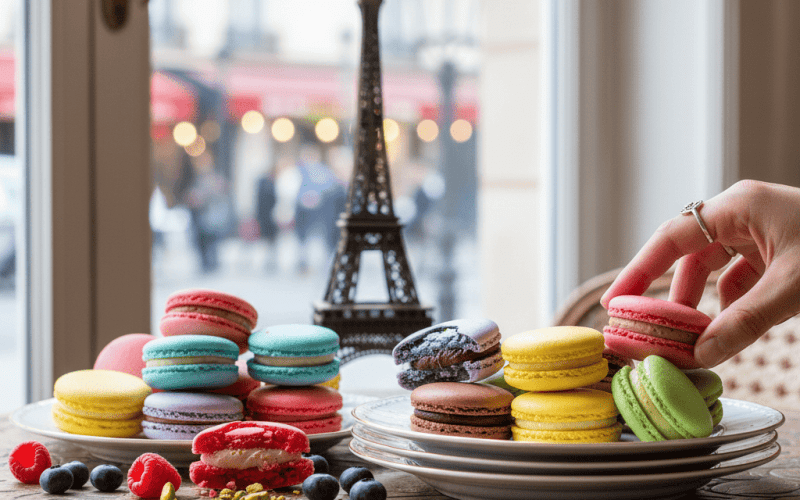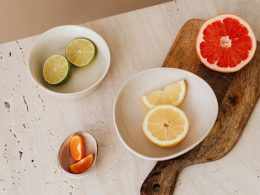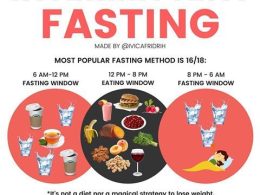Introduction
Paris, the world’s capital of refined pastry, has long been synonymous with elegance, precision, and culinary artistry. Among its many sweet treasures, macarons and madeleines stand out as iconic symbols of French baking. These delicate creations are celebrated not only for their flavors but also for the skill required to make them perfect. Aspiring bakers who wish to learn these timeless techniques can gain invaluable experience through Bakery Training in Chennai, where expert instructors guide students in mastering the nuances of French pastry, from ingredient selection to intricate finishing touches.
Let’s explore the history, techniques, and global fascination with these Parisian classics.
Parisian Patisserie Classics: Mastering Macarons and Madeleines
1. The History of Macarons and Madeleines
Macarons trace their origins to Italian almond meringue cookies brought to France in the 16th century. Over time, French bakers transformed the humble cookie into a refined, sandwich-style confection filled with ganache, buttercream, or jam. Today, the macaron is synonymous with luxury, celebrated for its smooth shells, crisp exterior, and chewy center.
Madeleines, on the other hand, are small sponge cakes originating from the Lorraine region. Their distinctive shell-like shape, soft crumb, and subtle buttery flavor make them ideal for teatime indulgence. Madeleines gained literary fame in Marcel Proust’s In Search of Lost Time, immortalizing the sensory experience of nostalgia tied to taste.
Both pastries embody French values of precision, elegance, and tradition, representing centuries of culinary evolution.
2. Understanding the Science Behind Macarons
Mastering macarons requires understanding the delicate chemistry of meringue, almond flour, and sugar. The process begins with carefully sifting almond flour and powdered sugar to prevent lumps and ensure a smooth batter. Egg whites must be whipped to stiff peaks, then gently folded into the dry ingredients to form a light, airy mixture.
The technique of macaronage, or folding the batter to the correct consistency, is critical. Overmixing leads to flat, spreading cookies, while undermixing results in cracks and uneven shells. Baking at precise temperatures ensures a crisp exterior while maintaining a chewy interior — a hallmark of perfect macarons.
Variations in flavor — from pistachio to passionfruit — showcase how French pastry chefs elevate simple ingredients into complex, layered tastes.
3. Mastering Madeleines: Technique and Timing
Madeleines may appear simpler than macarons, but their perfection lies in timing and technique. The batter combines flour, sugar, eggs, and butter, sometimes enhanced with lemon zest or vanilla for subtle aromatic notes. Chilling the batter before baking ensures the signature hump forms during oven expansion.
The molds are lightly buttered and floured to prevent sticking, and precise oven temperatures guarantee an even golden crust with a soft, spongy interior. Madeleines are traditionally served warm with tea or coffee, their delicate texture offering a comforting, indulgent bite that contrasts with the more sophisticated presentation of macarons.
4. Ingredient Selection: The Foundation of Excellence
In both macarons and madeleines, ingredient quality directly affects the final product. Almond flour should be finely ground and fresh to maintain flavor and texture. Eggs must be at room temperature for optimal meringue stability, while butter should be unsalted and high-quality to achieve the richness expected in French pastries.
Natural flavorings, such as citrus zest, vanilla pods, and pure extracts, enhance taste without overpowering the delicate balance of the pastries. For macarons, fillings like ganache, fruit curd, or buttercream should complement the shells in both texture and flavor.
5. Global Popularity and Influence
Parisian pastries have transcended borders, inspiring bakeries worldwide. Macarons are now ubiquitous in luxury patisseries from Tokyo to New York, often customized with local flavors like matcha, mango, or salted caramel. Madeleines, once a French teatime staple, have found a global audience, appearing in cafés and bakeries as a symbol of refinement and nostalgia.
This global influence has encouraged aspiring bakers to pursue formal training. Programs in cities like Chennai provide hands-on experience in crafting these classics with professional techniques adapted for modern kitchens.
6. Baking Techniques and Modern Innovations
While traditional methods are revered, contemporary pastry chefs innovate within these classics:
- Macarons now feature creative shell colors, flavored ganaches, and even hybrid fillings that combine savory and sweet elements.
- Madeleines are occasionally baked with chocolate chips, nuts, or infused with exotic spices to cater to diverse palates.
Modern techniques often include precision piping, temperature-controlled ovens, and ingredient substitutes for dietary preferences, such as gluten-free almond flour or plant-based fillings. These innovations maintain the essence of the pastries while appealing to today’s culinary trends.
7. Education and Skill Development in Pastry Arts
For aspiring bakers, mastering macarons and madeleines requires more than recipes — it demands hands-on practice, attention to detail, and understanding ingredient behavior. Training programs such as Baking Classes in Mogappair provide comprehensive instruction, covering:
- Accurate measurement and scaling techniques.
- Temperature control and baking chemistry.
- Flavor pairing and presentation aesthetics.
- Troubleshooting common pastry issues, such as cracked macaron shells or uneven madeleine humps.
Professional guidance accelerates skill development, helping students gain confidence and finesse in creating these intricate pastries.
8. Presentation and Aesthetic Appeal
French pastries are as much about appearance as flavor. Macarons are often arranged in colorful rows, emphasizing harmony and balance, while madeleines are showcased in elegant baskets or plates that highlight their delicate shapes.
Bakers are trained to appreciate the importance of presentation: consistent size, smooth shells, and perfect humps convey professionalism and attention to detail. In professional pastry kitchens, aesthetics are a critical component, as visually appealing desserts enhance the overall culinary experience.
9. Challenges in Mastering Parisian Classics
Despite their popularity, macarons and madeleines remain challenging for beginners. Common obstacles include:
- Cracked or hollow macaron shells.
- Uneven baking or overbrowning of madeleines.
- Inconsistent texture or flavor balance.
These challenges underscore the importance of proper training. Expert-led Bakery Training in Chennai programs focus on these nuances, offering students the tools and techniques to troubleshoot problems and consistently produce high-quality pastries.
10. Career Opportunities and Global Appeal
Mastering macarons and madeleines opens doors to diverse career opportunities. Skilled pastry chefs can work in international patisseries, luxury hotels, or launch their own artisan bakeries. The global demand for Parisian-style pastries ensures that trained bakers have the potential to cater to sophisticated clientele, participate in competitions, or even innovate their own signature creations.
Understanding both traditional and modern techniques ensures versatility and adaptability — essential qualities for any aspiring pastry professional.
Conclusion: The Timeless Charm of Parisian Pâtisserie
Macarons and madeleines represent more than just baked goods; they are cultural icons, showcasing centuries of French culinary artistry. Perfecting these pastries requires patience, precision, and an appreciation for detail. From ingredient selection to final presentation, every step matters in creating a memorable dessert experience.
With practice, dedication, and expert guidance, macarons and madeleines can transform from challenging confections into signature creations a testament to skill, artistry, and the timeless charm of Parisian baking.












